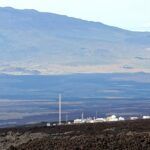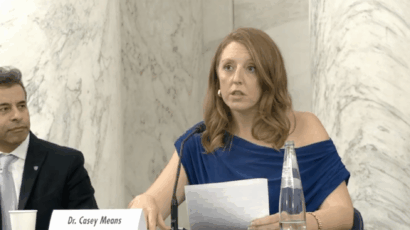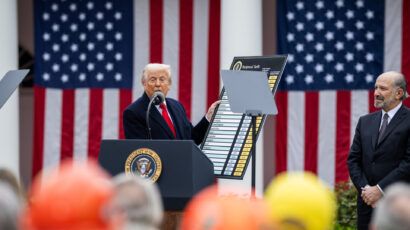The climatic consequences of nuclear war
By Steven Starr | March 12, 2010
Although the ongoing Nuclear Posture Review is supposed to include all aspects of the strategy and doctrine that govern the use of U.S. nuclear weapons, it once again will not consider one crucial question: What would be the long-term consequences to Earth’s environment if the U.S. nuclear arsenal were detonated during a conflict?
This isn’t a question to be avoided. Recent scientific studies have found that a war fought with the deployed U.S. and Russian nuclear arsenals would leave Earth virtually uninhabitable. In fact, NASA computer models have shown that even a “successful” first strike by Washington or Moscow would inflict catastrophic environmental damage that would make agriculture impossible and cause mass starvation. Similarly, in the January Scientific American, Alan Robock and Brian Toon, the foremost experts on the climatic impact of nuclear war, warn that the environmental consequences of a “regional” nuclear war would cause a global famine that could kill one billion people.
Their article, “Local Nuclear War: Global Suffering,” predicts that the detonation of 100 15-kiloton nuclear weapons in Indian and Pakistani megacities would create urban firestorms that would loft 5 million tons of thick, black smoke above cloud level. (This smoke would engulf the entire planet within 10 days.) Because the smoke couldn’t be rained out, it would remain in the stratosphere for at least a decade and have profoundly disruptive effects. Specifically, the smoke layer would block sunlight, heat the upper atmosphere, and cause massive destruction of protective stratospheric ozone. A 2008 study calculated ozone losses (after the described conflict) of 25-45 percent above mid-latitudes and 50-70 percent above northern high latitudes persisting for five years, with substantial losses continuing for another five years. Such severe ozone depletion would allow intense levels of harmful ultraviolet light to reach Earth’s surface–even with the stratospheric smoke layer in place.
Beneath the smoke, the loss of warming sunlight would produce average surface temperatures colder than any experienced in the last 1,000 years. There would be a corresponding shortening of growing seasons by up to 30 days and significant reductions in average rainfall in many areas, with a 40-percent decrease of precipitation in the Asian monsoon region. Basically, the Earth’s surface would become cold, dark, and dry.
Humans have had some experience with this sort of deadly global climate change. In 1815, the largest volcanic eruption in recorded history took place in Indonesia. Mount Tambora exploded and created a stratospheric layer of sulfuric acid droplets that blocked sunlight from reaching Earth. During the following year, which was known as “The Year without Summer,” the northeastern United States experienced snowstorms in June and debilitating frosts every month of the year.
In an earlier study, Robock, Toon, and their colleagues predicted that the decreases in average surface temperatures following the nuclear conflict described above would be 2-3 times colder than those experienced in 1816 and that the black soot produced by subsequent nuclear firestorms would remain in the stratosphere five times longer than the acid clouds from volcanic eruptions. In other words, 10 years after a regional nuclear war, Earth’s average surface temperatures would still be as cold, or colder, than they were in 1816. Most likely, the long-lived smoke layer would produce a “decade without a summer.”
Here it’s important to point out that the 100 Hiroshima-size weapons detonated in Robock and Toon’s regional war scenario contain less than 1 percent of the combined explosive power in the 7,000 or so operational and deployed nuclear weapons the United States and Russia possess. If even one-half of these weapons were detonated in urban areas, Robock and Toon have predicted that the resulting nuclear darkness would cause daily minimum temperatures to fall below freezing in the largest agricultural areas of the Northern Hemisphere for a period of between one to three years. Meanwhile, average global surface temperatures would become colder than those experienced 18,000 years ago at the height of the last Ice Age.
Amazingly, however, no follow-up studies have been initiated to further evaluate the decreases in temperature, precipitation, or ozone depletion predicted to arise from either regional or strategic nuclear war. Large studies were conducted in the 1980s on “nuclear winter” by the U.S. National Academy of Sciences, the World Meteorological Organization, and the International Council for Science’s Scientific Committee on Problems of the Environment. But given that Robock and Toon’s new research has found that these early studies significantly underestimated the climatic and environmental consequences of nuclear war, wouldn’t it make sense for such groups to now revisit the subject? At the very least, Washington and Moscow, with 95 percent of the world’s nuclear weapons, should be required to investigate the environmental and climatic consequences from a nuclear war created by their nuclear arsenals.
Moreover, in the United States, there appears to be a legal basis to force the Defense Department to evaluate the likely consequences of its nuclear arsenal. According to the EPA’s website, “The National Environmental Policy Act [NEPA] requires federal agencies to integrate environmental values into their decision-making processes by considering the environmental impacts of their proposed actions and reasonable alternatives to those actions. To meet NEPA requirements, federal agencies [must] prepare a detailed statement known as an Environmental Impact Statement.”
If that’s the case, why not require Defense to create an Environmental Impact Statement for the more than 1,000 U.S. strategic nuclear weapons now on high-alert?
To date, the discussion of a nuclear-weapons-free world has included no mention of the environmental consequences of nuclear war. I fear that without such a dialogue, the debate lacks the sense of urgency required to change the nuclear status quo. That’s why I believe that a wake-up call from the scientific community is seriously needed.
Regardless of how “safe from use” U.S. and Russian nuclear weapons are considered to be, they still could wipe out humanity. Thus, the recognition by Washington that its nuclear arsenal, if used in conflict, will make the whole world–including all of its territory–uninhabitable, is long overdue.
Together, we make the world safer.
The Bulletin elevates expert voices above the noise. But as an independent nonprofit organization, our operations depend on the support of readers like you. Help us continue to deliver quality journalism that holds leaders accountable. Your support of our work at any level is important. In return, we promise our coverage will be understandable, influential, vigilant, solution-oriented, and fair-minded. Together we can make a difference.
Topics: Climate Change, Nuclear Weapons, Opinion















